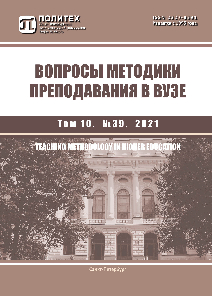ROLE OF MICROCONTEXTS IN THE FORMATION OF COGNITIVE COMPETENCES IN TEACHING GENERAL ENGINEERING DISCIPLINES AT THE UNIVERSITY
The worldwide transition to post-industrial technologies has significantly outpaced changes in vocational education institutions, making the development of future engineers' cognitive skills as well as their creative and critical thinking a challenging scientific issue that has not yet been solved. The purpose of the article is to propose a methodological solution for activating the role of students in the learning process and establishing the conditions for their cognitive participation in the procedure of creative modification of information. Current methods frequently entail the introduction of specific subjects or activities to foster the growth of critical, creative, and cognitive abilities. However, the research into the mental processes taking place during the interiorization of educational information and the intellectual operations underlying cognitive sphere formation demonstrates that these fundamental intellectual resources of the individual can be continuously engaged in learning any discipline. However, it is necessary that we create conditions permitting continuous, manageable intellectual and psychological strain. Special teaching strategies that make use of microcontexts regarded from a broad scientific perspective enable the development of students’ cognitive skills and capacities as well as the formation of a conscious critical attitude towards knowledge to be learned. Seven teaching strategies are presented in the paper for revealing the microcontexts of educational information fragments when teaching fundamental mechanical engineering courses, such as Theory of Mechanics and Mechanisms and Machine Sciences. Teaching strategies using microcontexts allows to form a conscious critical attitude to new information, promote the development of students’ cognitive skills and abilities. Any engineering discipline can benefit from the use of microcontexts since they offer contrasting descriptions of concepts, actions, and objects while clarifying how these relate to their immediate environment.



